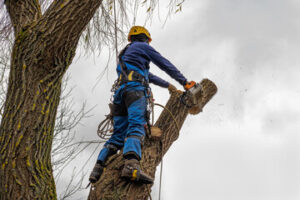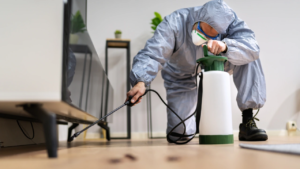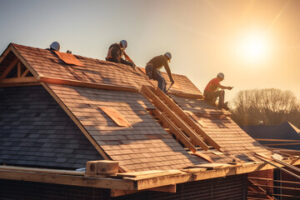Cabinet Refacing Sacramento CA is a budget-friendly, eco-conscious alternative to complete replacement. Refacing is also flexible and allows for a variety of customization options.

But before jumping into a DIY refacing, it’s important to understand the basics. Learn how to properly prepare your cabinets and kitchen space for refacing to avoid visible seams and faulty adhesion.
Solid wood cabinet refacing uses solid pieces of natural wood to cover the existing cabinets’ frames and boxes. It adds a rich look and texture to your kitchen while also enhancing the value of your home. Solid wood cabinets can be stained, painted or left natural to match a variety of décor styles. They also withstand the test of time and are less likely to warp or crack than other materials.
Depending on the species of wood used, solid wood may be more expensive than other cabinet materials. However, refacing offers a cost-effective alternative to a complete rebuild or remodel and can save homeowners thousands of dollars in the process. It’s also important to consider the environmental impact of your new refacing project before making any decisions. Using wood from sustainably harvested forests is more eco-friendly than other types of cabinetry.
Veneer is a common choice for refacing, and it’s available in a variety of thicknesses. It can be made from solid or engineered wood, and it’s typically glued to a medium-density fiberboard (MDF) surface. Veneer is more vulnerable to humidity than other cabinet materials and can swell when exposed to moisture.
MDF is a strong and durable material that’s a good option for cabinet refacing because it’s less costly than solid wood. It’s also a better choice for painted finishes because it resists moisture and provides a smooth surface. It’s also easy to clean and stains well. MDF veneers can be glued to solid wood, but it’s important to choose the right type of adhesive. Paper-back or pressure-sensitive adhesives offer easier application and reduce the risk of lifting or peeling over time. Choosing the right refacing materials can dramatically improve the aesthetic and functionality of your kitchen without the cost and disruption of a complete remodel or rebuild.
Wood Veneer
Wood veneer is a natural material that is both beautiful and durable. It can be used to add a sense of warmth and style to any kitchen design, from traditional to contemporary. It also provides a wide range of color options, and it can be stained or painted to match any design aesthetic.
To get the most out of your wood veneer, it’s important to work with a professional who has the skills and knowledge to make it look seamless. Veneer is a very delicate material that requires a high level of skill and experience to work with. With the right expertise, you can create a look that is beautiful and unique.
While some people may be hesitant to choose wood veneer for their cabinets, the truth is that it can be an excellent option for many kitchens. Wood veneer is a durable material that can be used on flat or curved surfaces. It can also be carved to create a custom design. While it is more expensive than other materials, wood veneer is still an affordable choice for those looking to revamp their cabinets.
The best wood veneers are sourced from high-quality trees and processed using modern methods. They are available in a variety of grades, from AA, which offers near-perfection, to C, which showcases natural characteristics and open defects. Choose a grade that will complement your existing kitchen’s color palette and overall design aesthetic.
To prepare for your cabinet refacing project, begin by removing the old doors and drawer fronts. Carefully label each piece so that you know where it should go when you’re ready to reassemble the cabinets. Then, clean the surface of your cabinets to ensure that the adhesive will bond properly. Once the cabinets have been cleaned, apply the veneer and secure it in place with clamps until it sets.
Melamine Wood
Melamine is a plastic material that’s been used extensively in modern cabinet construction. It’s available in a wide variety of colors and patterns and can be fused with plywood or medium density fiberboard (MDF) to enhance the durability and appearance of the final product. Melamine is also more resistant to stains and scratches than real wood and is easier to clean, making it an ideal choice for kitchens.
This type of cabinet refacing is relatively straightforward because it’s easy to cut and drill into. However, it’s important to make sure the melamine is being cut correctly. This is because if there’s any moisture trapped beneath the melamine surface to the particleboard substrate, it can cause the melamine to crack or break.
While melamine is affordable and easy to install, it lacks the look of real wood. Many melamine products have printed motifs and textures that are meant to mimic the look of natural wood, but they can often end up looking fake or even unappealing. In addition, melamine can have a “plasticky” feel to it that some people find unpleasant.
At Deslaurier, we offer both standard textured melamine and a premium high-end product known as European Textured Melamine (ETM). ETM is considered more luxurious than standard melamine because it produces a higher quality material that’s less likely to have a “plasticky” feel to the surface and that looks and feels more like natural wood.
Whether you’re considering melamine or another option, it’s important to discuss your needs and budget with our team before beginning your project. We’ll help you determine what materials are best for your project and ensure that you get the best results possible.
PVC Vinyl
Cabinet refacing is a great way to transform your kitchen without breaking the bank. You’ll replace your existing cabinet doors and drawer fronts with brand new ones, and you can choose from a variety of materials and finishes. The material you choose will determine the overall look of your cabinets. Solid wood veneers are a popular choice, but you should consider other options as well.
PVC vinyl is a versatile and affordable option for cabinet refacing that comes in a wide variety of styles, colors, and textures. This durable material resists stains, and it can withstand heat and sunlight. It’s also easy to clean, making it a good choice for busy kitchens. However, it’s important to avoid abrasive cleaners, brushes, and harsh chemicals as they can damage the surface.
Medium Density Fiberboard, or MDF, is another cabinet refacing material that can mimic the look of real wood at a fraction of the cost. It’s also durable and resistant to chipping, making it a good choice for budget-minded homeowners. However, it’s not as sturdy as solid wood and may be susceptible to moisture.
By reusing the existing cabinet structure, you’ll minimize the need for new raw materials like wood and metal. This reduces the environmental degradation caused by mining and processing these materials, which can cause soil erosion, water contamination, and greenhouse gas emissions. Furthermore, refacing uses less energy than replacing your cabinets completely, leading to a smaller carbon footprint. Additionally, it reduces the need for forestry, which can lead to deforestation and loss of biodiversity.
Thermofoil
Thermofoil is flexible, non-porous plastic vinyl that’s vacuum-sealed onto a base, typically MDF (medium-density fiberboard). The heat and pressure applied during manufacturing produces an exceptionally smooth finish that closely resembles painted wood. Thermofoil is a popular choice for budget-friendly cabinet refacing projects. It’s also resistant to moisture, making it a smart and durable choice for damp spaces like bathrooms and kitchens.
Because of their durable construction and low-maintenance properties, thermofoil cabinets are a great investment for homeowners. They’re a cost-effective alternative to painting, requiring minimal prep work and allowing for a much faster installation.
Additionally, thermofoil is a versatile and sustainable option for environmentally-conscious homeowners. Because it uses MDF as a base, the material reduces deforestation and helps preserve our planet’s delicate woodland ecosystems. Any MDF offcuts can be recycled into other products, embodying the mantra ‘waste not, want not’.
While there are many reasons why you might choose thermofoil for your cabinet refacing project, it’s important to be aware of its limitations. For instance, the material isn’t as easy to repair compared to paint. It can withstand some light damage and scratches, but excessive heat and moisture are kryptonite for this type of material. Exposure to too much heat can cause the surface to bubble, crack, or even delaminate, which can dramatically affect the appearance of your cabinets and decrease their resale value.
It’s also not as customizable as other cabinetry materials. Thermofoil is available in a limited range of styles and colors, which can limit your design options. It’s also susceptible to peeling if exposed to too much moisture or heat. If the peeling is severe, it will be difficult to fix and may require replacement.








